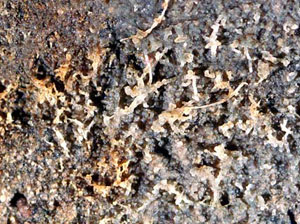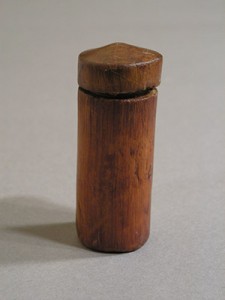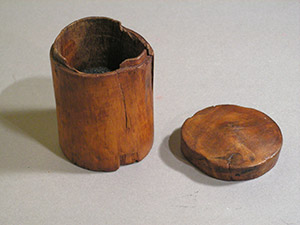








|
|
Pills Give Clues to Roman Medicine (Italy)
december 12th, 2010
|
|
Recent analysis using DNA sequencing of ancient Roman pills found aboard a ship (known as the "Relitto del Pozzino") that sank in the Gulf of Baratti (in Tuscany, Italy) between 140 -120 B.C., has revealed that the medicines consist of material from simple garden plants, namely carrot, radish, parsley, celery, wild onion and cabbage. The presence of yarrow and hibiscus also were detected in the pills.
The pills were found aboard the shipwreck, which was first located in 1974, inside a tin container. Other medical implements also were found aboard the ship including a surgical hook, a mortar, a copper bleeding cup and a tin pitcher. The implements were all located close together, leading researchers to believe they were originally packed in a chest belonging to a physician.
|
Among the artifacts found on board in 1989 were glass cups, a pitcher and ceramics, all of which suggested that the ship was sailing from the eastern Mediterranean area.
Its cargo also included a chest that contained various items related to the medical profession: a copper bleeding cup and 136 boxwood vials and tin containers.
Inside one of the tin vessels, archaeologists found several circular tablets, many still completely dry.
“They were less than an inch in diameter and about a third to a half inch thick,” said Robert Fleischer, an evolutionary geneticist with the Smithsonian’s Center for Conservation and Evolutionary Genetics in Washington, D.C.
The tablets were “very tightly compressed vegetation in a very solid pill. In fact, you had to use a scalpel to cut pieces off of it. But under a microscope, you could see plant fibers in it. It probably wasn’t something that was taken whole.
“It was assumed the pills were medicines that the physicians were using. There were things associated with this chest that led them to believe it was a physician’s chest,” said Fleischer.
Alain Touwaide, historian of sciences in the Department of Botany at the Smithsonian’s National Museum of Natural History and scientific director of the Institute for Preservation of Medical Traditions, collaborated in the discovery. In 2004, he received fragments of the pills from the Italian Department of Antiquities. DNA sequencing was done by Robert Fleischer.
The identification of the plant components in the Roman pills is a first,” Touwaide says. “The pills are the only know archaeological remains of ancient medicines, and their analysis is the first ever performed.”
So far, the various things observed in the pills are also found in ancient medical texts, according to Alain Touwaide, scientific director of the Institute for the Preservation of Medical Traditions in Washington.
“My job is discovering new texts or texts which have been overlooked in the past about the therapeutic uses of plants in all the cultures that flourished around the Mediterranean,” Touwaide told AOL News.
Touwaide, an archaeobotanist—one who analyzes plant remains from archaeological sites—has spent a 35-year career discovering and publishing ancient texts from all over the world.
“We bring these texts to light, not only for the mental excitement of history, but because we think, and we have proof, that these texts can be useful for contemporary pharmacological research.
“When I started my work, the people in academia assumed that these ancient texts were just quackery or placebo effect. Even the historians didn’t give any credit to these texts.”
Touwaide says the 2,000-year-old pills are just the tip of the iceberg.
“I have these huge databases and I’m trying to get all the information about all the plants that were used to treat medical conditions.”
Applying DNA analysis to the tablets, Fleischer noticed that they differed in their makeup.
“What was a surprise to me was that there were so many things in each pill, and they weren’t identical—the pills had different things in them.
“These guys were putting all these different things together, and I don’t know if this was a highly developed sense of what goes with what, to solve what problems, or if they were just mixing and matching in the hope that something would work. Or maybe adding some things merely to flavor what otherwise would be a bad-tasting concoction.”
As Fleischer and Touwaide continue researching the tablets, they hope to determine their original purpose.
“When I look in my texts—what these plants were used for—the only common denominator I find is that they were used for gastrointestinal trouble,” Touwaide theorized.
“I came up with the idea that these tablets might have been used to treat dysentery for the people on the boat, and this was quite a problem among sailors.”
Both Fleischer and Touwaide hope their research signals a new paradigm in pharmacological studies as the ageless tablets seem to reach across thousands of years of history and medicine.
“We know there’s a lot of traditional knowledge that is out there in cultures and has a lot of use and has been adopted in modern cultures—things like aspirin where the active ingredient is derived from willow bark,” Fleischer said. “So I think there’s potential to find things in these pills—or combinations of things—that might actually be useful.”
Touwaide cautions that researchers shouldn’t assume that ancient people left us texts about medicines without knowing full well what they were about and how to use them.
|

The substances analysis at microscope


The wood boxes
|
“We have found uses of plants which have been forgotten for years. My point is that if ancient cultures, over the centuries, have spent time, energy and money to keep this information, it’s not because this information doesn’t work,” said Touwaide.
The artifacts from the shipwrecked Relitto del Pozzino can be seen on display at the Archaeological Museum of Populonia in Piombino, Italy.
“Images are "concessa a corredo della notizia" from the Soprintendenza Archeologica della Toscana.

|
|
|